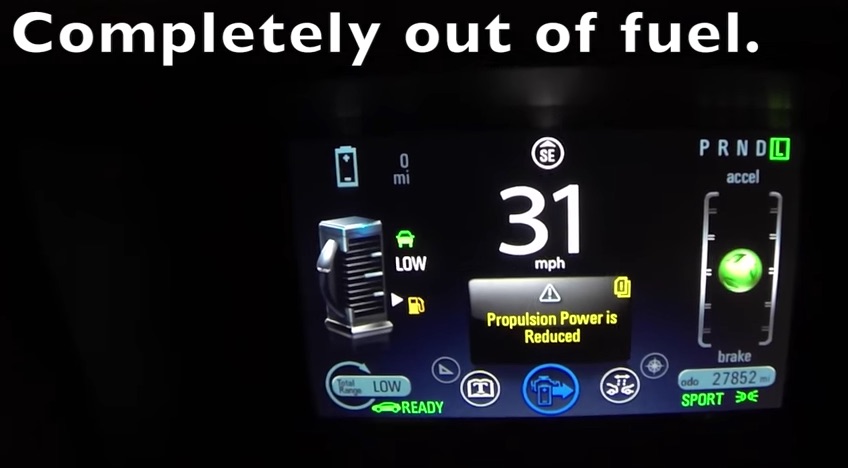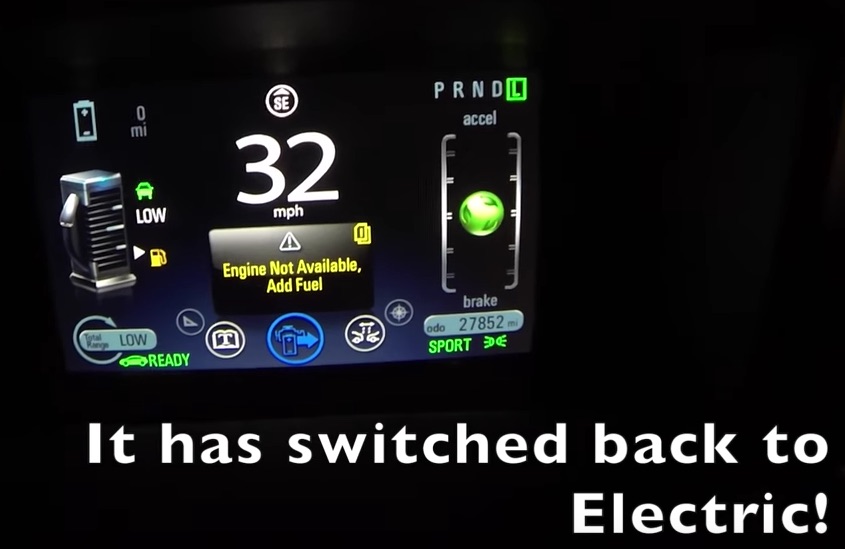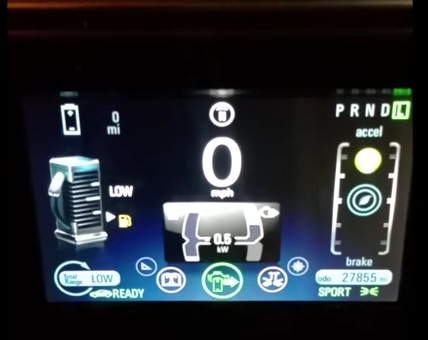What happens to a Chevy Volt when it runs out of electricity AND gasoline?
; Date: April 7, 2017
Tags: Chevy Volt »»»» Plug-in Hybrid »»»» EV Range »»»» Gasoline


The video below shows the results of that experiment.



What's demonstrated is the "buffer zone" GM designed into the Chevy Volt drive system. They designed the Volt to never fully charge the battery pack, and to do its darnedest so the pack will never be fully discharged. Total battery lifetime is extended greatly if both are true. It's well known that, with lithium-ion batteries, the more often the pack is kept fully charged or fully discharged the lower the total lifetime of the pack. That is, pack capacity is degraded when it is either kept fully charged or when it is fully discharged.
Gasoline and electric battery packs behave differently at full discharge. A gasoline engine will run at full speed as long as it's given gasoline, and stops when it doesn't. So when a gas tank is empty it's empty and there's no power available.
Battery packs, instead, naturally have lower power output and the car will naturally drive sluggishly. The sluggish behavior is because power (Watts) output from the pack is lower than normal. A deeply discharge battery pack outputs a low voltage and lower amperage (Watts = Volts * Amps) simply because the pack doesn't have much energy left.
Typical OEM electric cars, like the Volt, don't have the instrumentation to show you that data however.
I know about this behavior from having built an electric car conversion. The instrumentation on my car showed not only battery pack voltage but voltage at the individual cell level. Which means I had 3+ years driving experience watching battery pack voltage in varying states of charge, and did experience driving the car to empty a couple times.
In a fully discharged battery pack the voltage can drop to (or below) the safe minimum voltage. That is, lithium-battery cells have a normal voltage range they operate in and electric car makers design the system to stay within that range. If the voltage drops below the bottom of that range, cells are damaged and their lifetime is reduced. Further, the power coming out of the pack drops to nearly zero in that condition.
The sluggishness demonstrated in the video is a side effect of the power output running low, and then dropping to zero.
In this video, as the guy kept driving the car became more and more sluggish finally reaching a state where it had zero power. If there was sufficient instrumentation the driver could see the battery voltage and power output dropping as the car becomes more sluggish.
Overall this video tells us an important thing -- that GM designed the Volt so it's extremely difficult to fully discharge the battery pack. The driver gets lots of warnings on the screen. A wise driver will pay attention and find a gasoline station. It's possible to keep driving and get the Volt into a state where the battery pack is fully discharged, but the warnings should be enough to forestall that result.
Source:
LegitStreetCars

